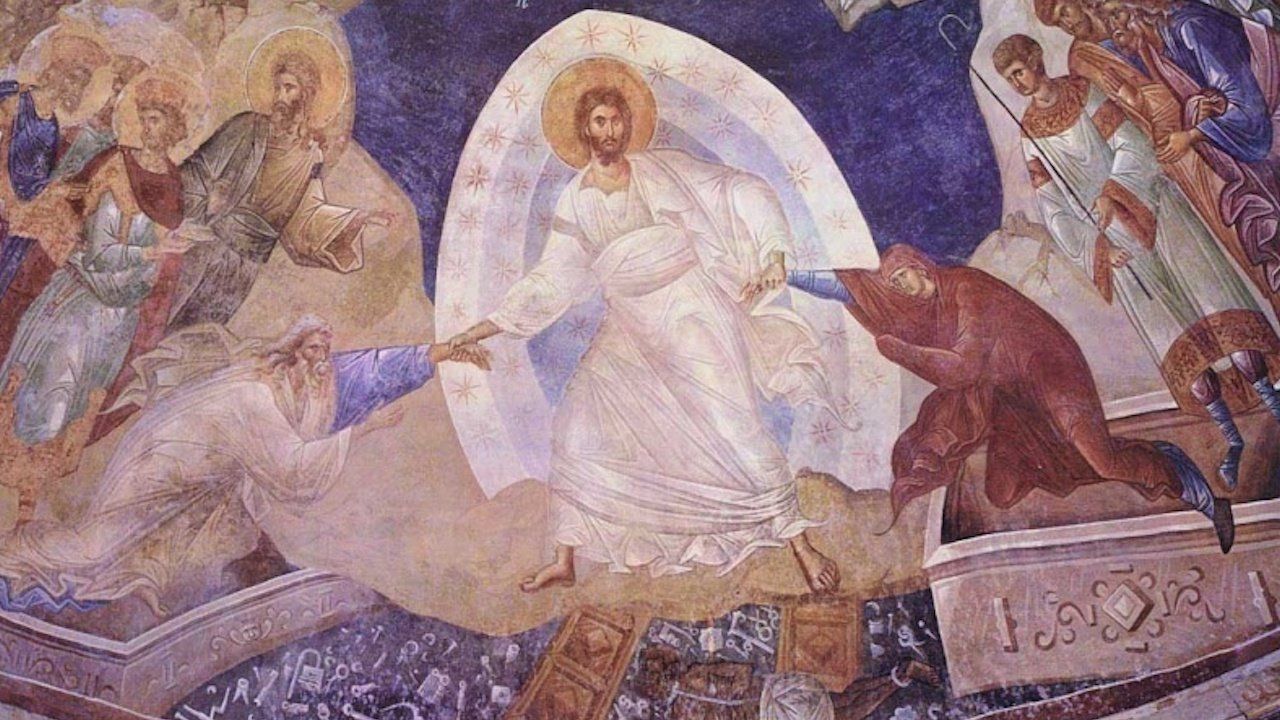THE RESURRECTION
of Christ is the greatest event in history. It is what distinguishes Christianity from every other religion. The other religions have mortal leaders, while the head of the Church is the risen Christ. The Resurrection of Christ is the renewal of human nature, the recreation of the human race, the living of eschatological reality. When we speak of the Resurrection, we do not separate it from the Cross, for the Cross and the Resurrection are the two poles of the redemptive experience, just as we pray in the Church, “through the Cross is joy come into all the world. Ever blessing the Lord, let us sing His Resurrection,” or just as we sing “We venerate Thy Cross, O Master: and we glorify Thy Holy Resurrection.”
In the Church we constantly speak of Christ’s Resurrection, which has great significance for the life of the believer. We do not believe in social revolutions, because the greatest good in the world came from the Resurrection and not from any human social revolution. Even if we correlate the Resurrection with true revolution, we find ourselves in the truth, from the point of view that through Christ’s resurrection man returned to his original position and rose still higher. The word for revolution is derived from a verb which means to come back to the former position. This rectification, the restoration of man took place through the Resurrection of Christ.
The Apostle Paul clearly proclaimed: “And if Christ is not risen, your faith is futile” (1 Cor. 15:17). The truth and power of the faith is due to the shining fact of the Resurrection of Christ. Without this the Christians are “of all men the most pitiable (1 Cor. 15:19).
The Resurrection of Christ is celebrated by the Church from the moment of His descent into Hell, where He freed the souls of the righteous of the Old Testament from the power of death and the devil. It is in this way that our Church celebrates it. In the liturgical texts it is seen clearly that the celebration of the Resurrection begins from Good Friday, as we see in the Great Saturday service of matins, in which the funeral processions takes place. And the homilies of the Fathers on Good Friday are actually homilies of resurrection and victory.
This is also seen in the holy iconography of the Resurrection. The Church decided to regard the descent into Hell as a true icon of the Resurrection. To be sure, there are also icons which depict Christ’s appearing to the Myrrh-bearing women and the Disciples, but the icon par excellence of the Resurrection is the shattering of death, which took place at Christ’s descent into Hell when His soul with its divinity descended into Hell and freed the souls of the righteous people of the Old Testament, where they were waiting for Him as their Deliverer.
The portrayal of the Resurrection by the descent of Christ into Hell is done for many and serious theological reasons. First, because, no one saw Christ at the moment when He rose, because He came out of the tomb of the sepulcher “of a sealed tomb.” The earthquake which happened and the descent of the angel that lifted the tombstone took place in order for the Myrrh-bearing women to be assured that Christ had risen. Secondly, because when Christ’s soul with its divinity descended into Hell, it crushed the power of death and the devil, because by His death He conquered death. It can be seen clearly in the Orthodox tradition that by Christ’s death the power of death was completely destroyed. Moreover, in the Church we sing: “Christ is risen from the dead, trampling down death by death…” His triumphal victory over death took place precisely at the moment when Christ’s soul, united with divinity, abolished death. Thirdly, by His descent into Hell Christ released Adam and Eve from death. Thus, just as by Adam came the fall of the whole human race, because he is our first ancestor, so through the raising of Adam we taste the fruits of the Resurrection and salvation. Because of the unity of human nature, what happened to the forefather happened to the whole of human nature.
For these reasons the most characteristic image of the resurrection of Christ is considered to be His descent into Hell, because furthermore, as we shall also see in what follows, the essence of the feast of the Resurrection is the death of death and the destruction of the devil: “We celebrate the death of Death, the annihilation of Hell,” we sing in the Church. The destruction of Hell and the death of death is the deepest meaning of the feast of the Resurrection.
*Excerpted from The Feasts of the Lord, pp. 241-243









